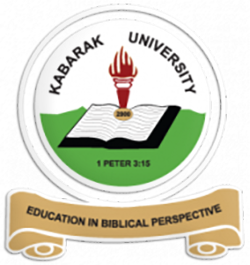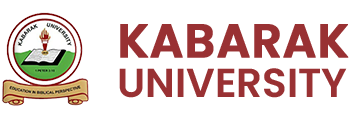By Mary W. Kinyanjui*
Public procurement refers to the acquisition of any type of works, assets and services of goods by a public entity.[i] Such acquisition may be by way of purchase, rental, lease, hire purchase, license, tenancy, franchise or by any other contractual means.[ii]In conducting public procurement, public entities are mandated to ensure that the method used is fair, equitable, transparent, competitive and cost-effective.[iii] Further, in choosing the method of procurement, the Public Procurement and Asset Disposal Act [iv] ("the Act") mandates public entities to use the open tendering method as the preferred method.[v] A departure from this method should be limited and must be in strict compliance with the conditions that are laid down in the Act. The other methods of procurement under the Act include: two-stage tendering, design competition, restricted tendering, direct procurement, request for quotations, electronic reverse auction, low value procurement, force account, competitive negotiations, request for proposals, framework agreements and any other method that may be described in the tender documents.[vi]
This article will analyse the relationship between the open tendering method and the twin principles of maximisation of value for money and fairness. An open tendering method can be defined as a mode of acquisition of goods which allows all eligible organisations and individuals to participate in the tender by submitting offers in response to a procuring entity's invitation to tender. In applying this method, a procuring entity is required to take such steps as are reasonable to bring the invitation to tender to the attention of those who may wish to submit tenders.[vii] Upon the advertisement of the tender, the procuring entity must ensure that it immediately avails the tender documents through its website.[viii]
A close look of the method reveals that despite adherence to the letter of the law, the open tendering method poses a challenge to the principle of value for money and the principle of fairness. The principle of value for money emphasises the need to manage public funds with care and due diligence so that prices paid for goods, services and works are acceptable and represent good value for the public funds expended on them. On the other hand, the principle of fairness, in the context of public procurement, may be construed to mean that the decision-making process of a procuring entity must be devoid of bias and/or preferential treatment. It could also mean that the evaluation process must be done strictly in accordance with the requirements of the solicitation documents.
Since the open tendering method is open to everyone, procuring entities usually end up with a large number of tenders. The higher number of tenderers would mean that the evaluation committees have to sit for longer time to go through each tender before shortlisting the most qualified bidder.The time and cost spent in analysing the endless number of tenders violates the very principle of value for money.
Secondly, the principle of value for money does not only refer to consideration of the lowest price but also to efficiency and effectiveness. However, given the rigor and severity of the laws, the procuring entities hardly have any room to assess the tenderers outside the strict terms and conditions of the tenders. While one may argue that a procuring entity ought to ensure that it sets out all its desired parameters within the tender documents, it is impractical and almost impossible to include all measuring tools for value for money at the pre-tendering stage. Any attempt to head-hunt a few tenderers would quickly be termed as solicitation, a serious offence.[ix]
With the severe challenge of time spent in the evaluation of the large number of tenders, most procuring entities usually opt to include numerous and unnecessary requirements in the solicitation documents. Perhaps this is done with the hope that potential tenderers may give up in participating or that most tenders would be knocked out of the process at the preliminary stages of evaluation.[x] A glance of any tender documents reveals this fact. For instance, most procuring entities require evidence of physical office despite the fact that in this digital era, physical offices are being replaced by virtual offices. Secondly, a tenderer is required to demonstrate evidence of having supplied goods/services to other procuring entities despite the fact that a tenderer may very well be qualified but without such an experience. This means that such a tenderer is permanently locked out from winning such tenders. The technical and unnecessary requirement curtails fairness and instead promotes preferential treatment.
Given the twin challenges of a costly and rigid procurement process, it would be advised that the law be reformed to reduce the rigidity hence ameliorate the challenges. In maximising value for money, private entities (who are not bound by the public procurement law) have been able to focus on few tenderers. While the open tendering method is premised on the assumption that such a method will enable a procuring entity to identify the lowest price for its goods or services, the end results for most procurement is wastage of resources despite choosing the lowest bidder. The problem may be attributed to unscrupulous tenderers who are able to meet the letter of the terms and conditions of a tender but their delivery is smacked with inefficiencies and inadequacies. How is a procuring entity expected to measure integrity of a tenderer without seeking for information about the entity beforehand? Any attempt to do so amounts to solicitation. On the other hand, limiting the number of tenderers will be seen as a violation of the key principles of procurement such as fairness, equitability, transparency and competitiveness.
While this paper does not intend to downplay the significant and important role that the existing laws have made in public procurement in Kenya, a time has come when realistic solutions have to be made to the persistent challenge of wastage of public resources. Perhaps, time is ripe for amendment of the Act to ensure that it does not restrict public entities in adopting and applying the open tender method. Section 92 (1) of the Act is couched in mandatory terms, that is, "open tendering shall be the preferred procurement method for procurement of goods, works and services."[xi] Further, Section 91 (2) limits the usage of the other alternative methods of tendering by stating that "only if that procedure is allowed satisfies the conditions under this Act for use of that method."[xii] This kind of restriction fails to promote maximisation of value for money.
In addition, if the open tendering method is to remain as the preferred method of tendering, it would be important that its procedures are relaxed to the extent that a procuring entity can be allowed to limit the number of tenders. A procuring entity should also be allowed to conduct due diligence on the tenderers before the valuation process. This will not only ensure that there is maximisation of value for money but will also reduce wastage of time in the procurement process.
It is also proposed that in order to encourage fairness in procurement, the open tendering method should not be mandatory. Just like the other methods of tendering, a procuring entity should be allowed to choose a method that would promote fairness such as the method of request for quotation, rotational distribution of tenders among others.
[i] Public Procurement and Asset Disposal Act (No 33 of 2015), Section 2.
[ii] Public Procurement and Asset Disposal Act (No 33 of 2015), Section 2.
[iii] Constitution of Kenya (2010), Article 227.
[iv] Public Procurement and Asset Disposal Act (No. 33 of 2015).
[v] Public Procurement and Asset Disposal Act (No. 33 of 2015), Section 91.
[vi] Public Procurement and Asset Disposal Act (No.33 of 2015), Section 92.
[vii] Public Procurement and Asset Disposal Act (No.33 of 2015), Section 96 (1).
[viii] Public Procurement and Asset Disposal Act (No.33 of 2015), Section 98.
[ix] Anti-Corruption and Economics Crimes Act (No.3 of 2003), Section 39 (3) and 48 (1).
[x] Public Procurement and Asset Disposal Act (No.33 of 2015), Section 79 and 80.
[xi] Public Procurement and Asset Disposal Act (No.33 of 2015), Section 92(1).
[xii] Public Procurement and Asset Disposal Act (No.33 of 2015), Section 91(2).
* The author is a lecturer at Kabarak University School of Law



